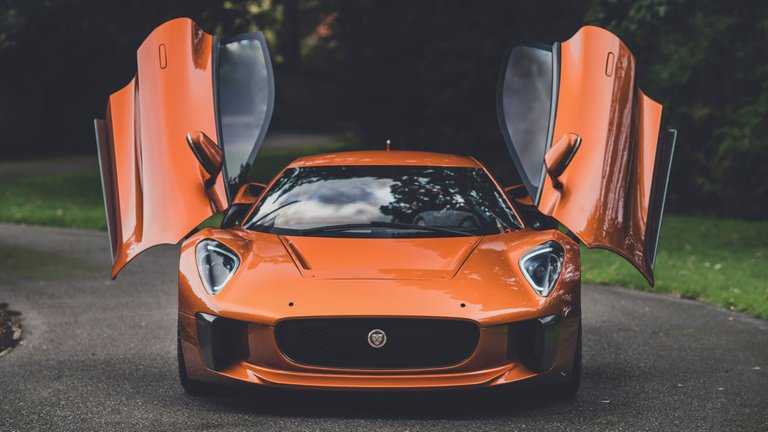
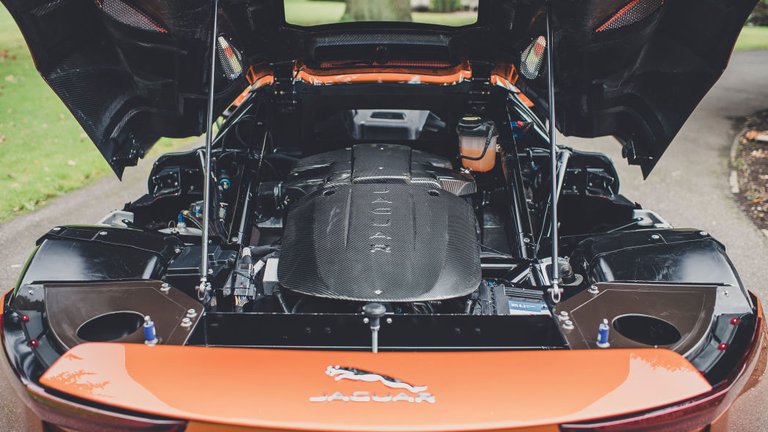
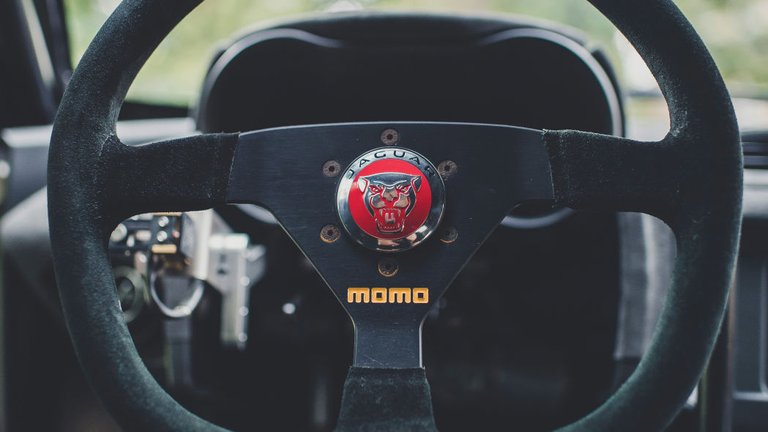
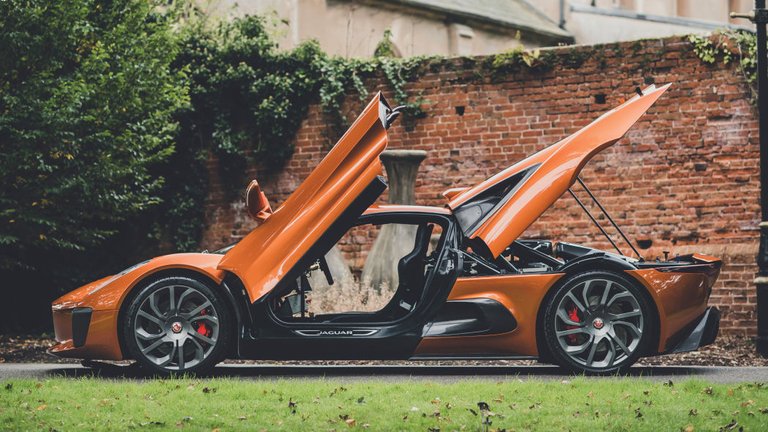
You may, or may not have heard of the Holy Trinity before. They're not some Arthurian mystical legend, or a trio of heroes journeying into a fantasy world, battling monsters. The Holy Trinity are three machines that you can sit inside, all lighting quick, monstrously powerful, and a beauty for the eye to behold. The names of our heroes are Sir LaFerrari, Sir McLaren P1, and Sir Porsche 918. They're all hypercars by birth, as a beacon of hope in a more eco-, and socially-conscious world, where big horsepower and driver interaction are old-fashioned.
While each of them are bitter rivals, they are united in this quest to help champion car enthusiasts forwards into the future. Each one of them are powered by tried and tested internal-combustion hearts, but combined with batteries and electric motors, our knights in shining armour are impregnable. They emit as few harmful particles into the air as any Prius, had as much tech as a Silicon Valley entrepreneur's house, and churned out more horsepower than any mortal would know what to do with them.
But most of all, it made us smile, and giggle helplessly like child seeing his favourite comic-book hero in the flesh. Nonetheless, as much we adored the Holy Trinity of hybridised sportscars for the generations to come, I can't help but feel somewhat sad that another colleague hadn't been able to join the gang. This fellow is someone rather unexpected, yet they could've proved more revolutionary than the rest of them combined. This is the tale of the Jaguar cub that was born to a world that was simply to good for him.
The Jungle Book.
Credits to: CarPixel - LaFerrari, McLaren P1, and Porsche 918 | The roundtable of the hypercar elite.
If we're talking about carmakers with illustrious racing pedigrees, then Ferrari, McLaren, and Porsche are quite far up there on the automotive echelon. But let's not forget about Jaguar, which for most of the 20th-century has dominated, and had a hand in all flavours of motorsports. From the gruelling fatigue of endurance racing, blistering fast F1 circuits, nitty and gritty world of rallying, and to the electrifyingly quiet Formula E championships; you name it, they've done it. Hell, Jaguar even won a NASCAR race in 1954.
Naturally then, that diverse motorsports legacy will eventually start seeping into their road-cars as well. This would culminate in a troubled lineage of mid-engine supercars, often homologated from racing Jaguars. They are a rare breed, starting from the Le Mans-borne XJR-15 of the early 1990s, and was the first car to be made entirely from carbon-fibre. This quickly ended with its successor, the XJ220, which was briefly the fastest production car in the world from 1992 to 1993.
Credits to: CarPixel - XJR-15 (1990), and XJ220 (1992) | The sins of our fathers.
It was nonetheless a disappointment when stringent regulations forced Jaguar to downsize the promised V12 engine, to a twin-turbocharged V6. In hindsight, this would later prove to be the recipe that many carmakers are emulating today. Many, including myself, thought that XJ220 was the last of Jaguar's mid-engine cars, before remembering that it had a spiritual successor, the C-X75. The same fate would befall its child as well, being a car that was so far ahead of its time, that the world was simply not prepared to have them.
The Jaguar C-X75, itself not a very attractive name, but was quite a stunner when the veil was lifted at the 2010 Paris Motor Show. After a 20 year hiatus, it proved that Jaguar wasn't out of the game, and had jampacked it with ground-breaking achievements. Built in partnership with the Williams F1 team, it eschewed the traditional internal-combustion engine for a hybrid-electric setup, and it was planned that 250 cars were to be made.
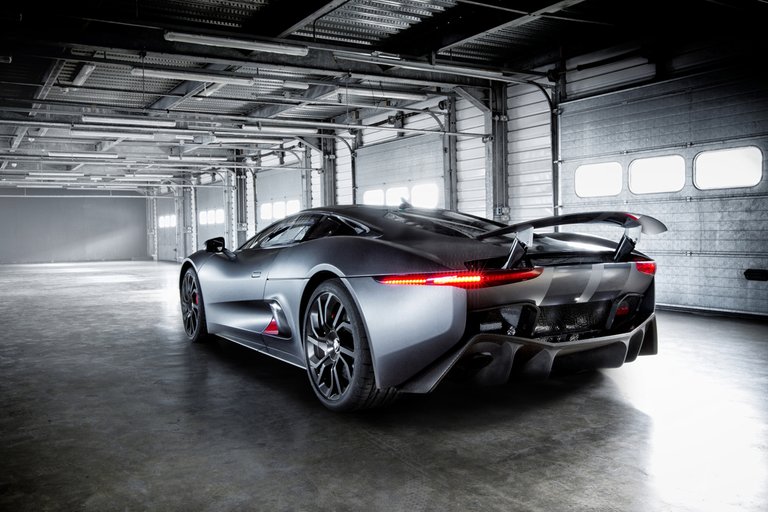
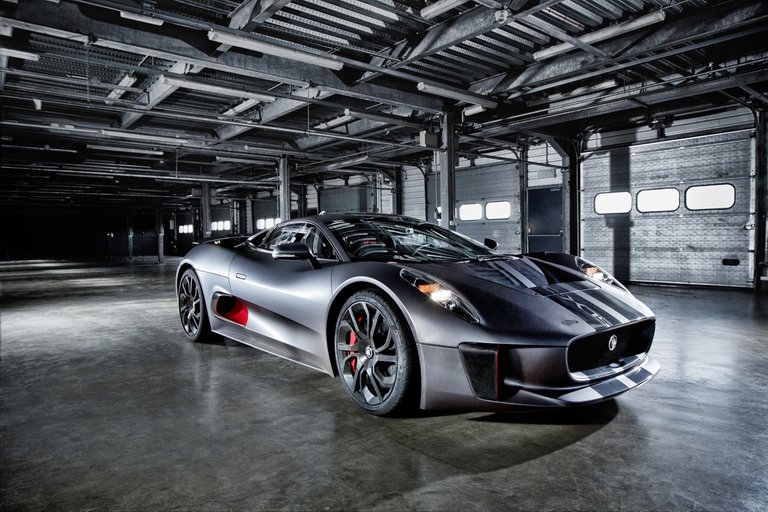
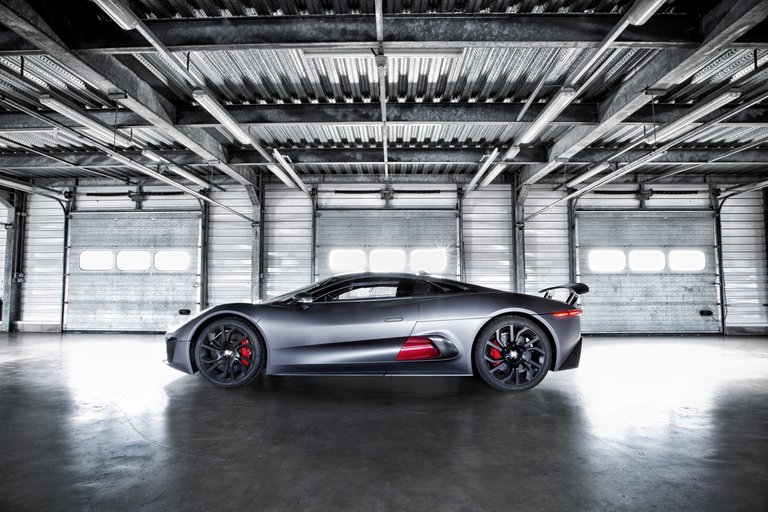
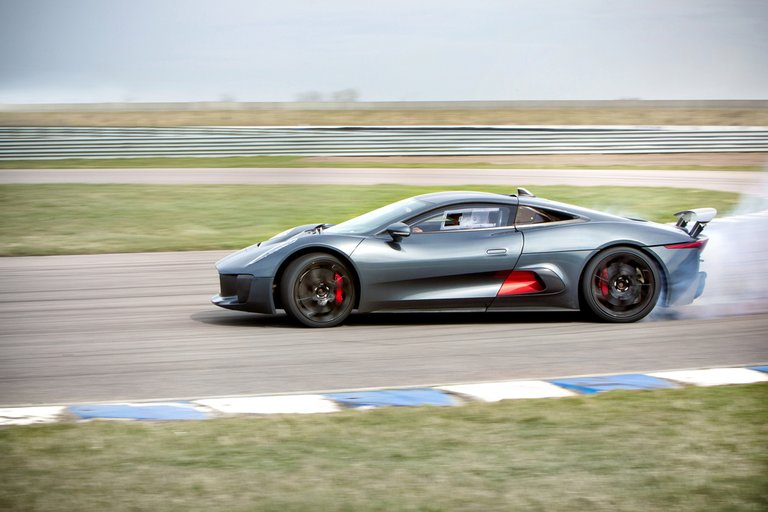
Credits to: Jaguar - C-X75 Prototype | So, very nearly there...
Its beating heart however, is a powertrain whose arrangement is peculiar, and much more different than the others. The C-X75 was to have 4 high-performance electric motors, one for each wheel, which incidentally gives it naturally active torque-vectoring for optimal handling. Powered by a 15kWh liquid-cooled lithium-ion battery, it was then connected to two diesel micro-gas turbines, for recharging on the move.
Those turbines are quite advanced, with the ability to be topped-up using a variety of different fuels and liquified gases. The ultimate goal was to reduce emissions, and maximise efficiency. Electric-only range was a healthy 68-miles, with a total range of up to 559-miles when the turbines are running. All the while, it's producing only a paltry 28g/km of carbon-dioxide. Even the most ambitious hybrid cars of today could only dream of such figures.
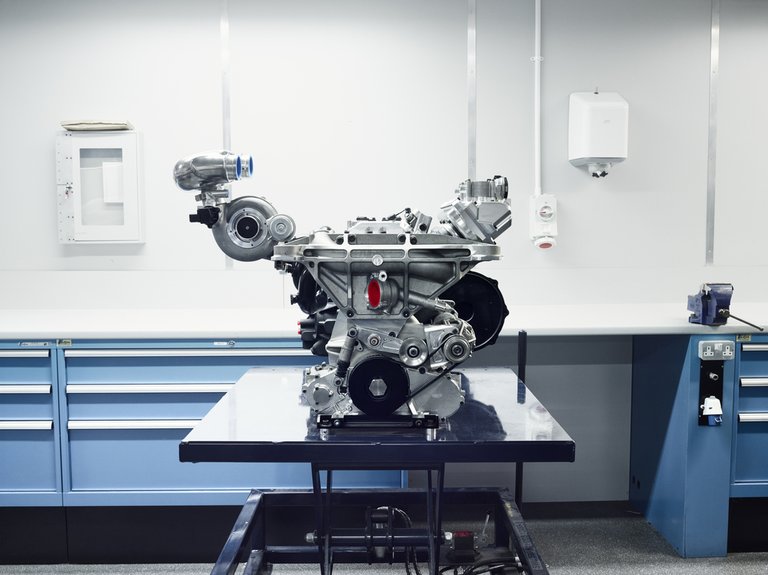
Credits to: Jaguar - C-X75 Prototype | A most electrifying powertrain, supposedly.
Yet, the C-X75 delivers just as much performance as any supercar has the right to be, and more. The combined powertrain has a total output of 780hp, which is around 194hp from each motor, along with a tyre-shreddingly high 1,180lb-ft of torque. It's targeted top-speed is 205mph, and a 0-62mph acceleration of a sprightly 2.9-seconds. So far, so very good. If raw performance isn't enough, then Jaguar's engineers had also paid attention to removing any excess weight.
Although at 1,700kg, it would make the C-X75 the heavyweight of the bunch. Nonetheless, grams were shaved off here and there. Each motor weighs only 50kg, while the battery pack comes in at 185kg. The aerodynamics around the sensuous, Ian Callum-penned bodywork was refined even further. There is a giant carbon-fibre rear-diffuser, paired with more underbody aero, and a deployable aerofoil spoiler to add downforce. The chassis is made from aerospace-inspired extruded and bonded aluminium, which adds to improving torsional rigidity and stiffness.
So Close, Yet So Far.
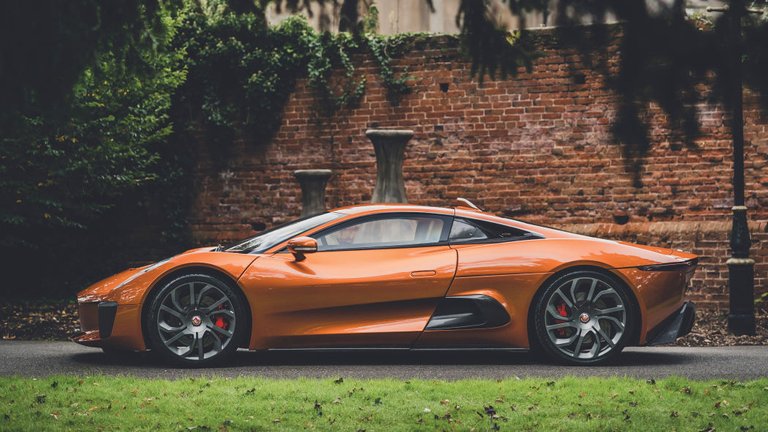
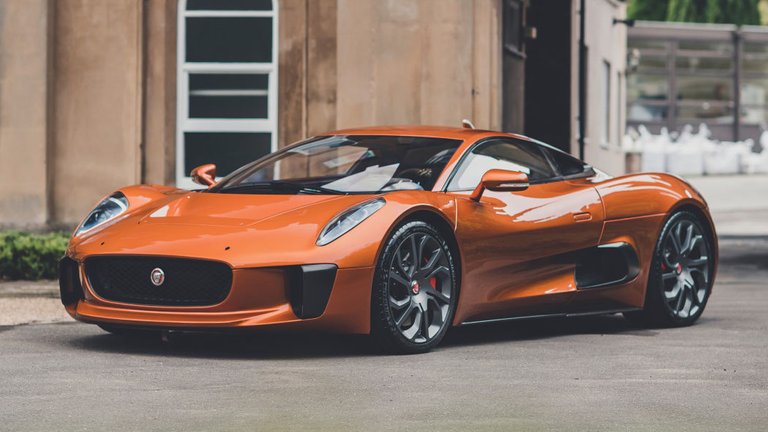
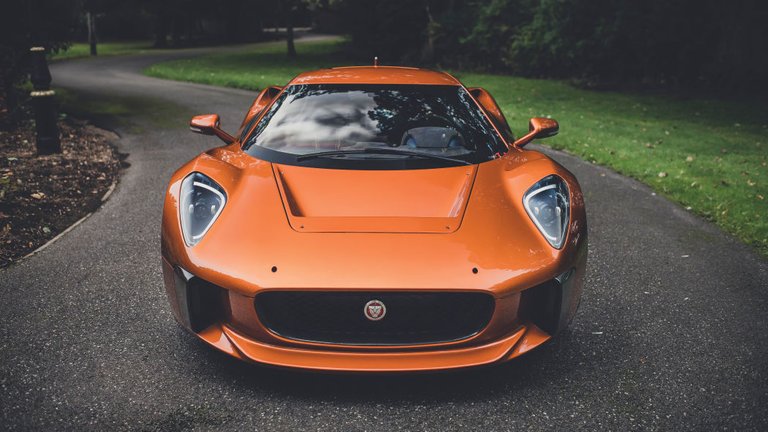
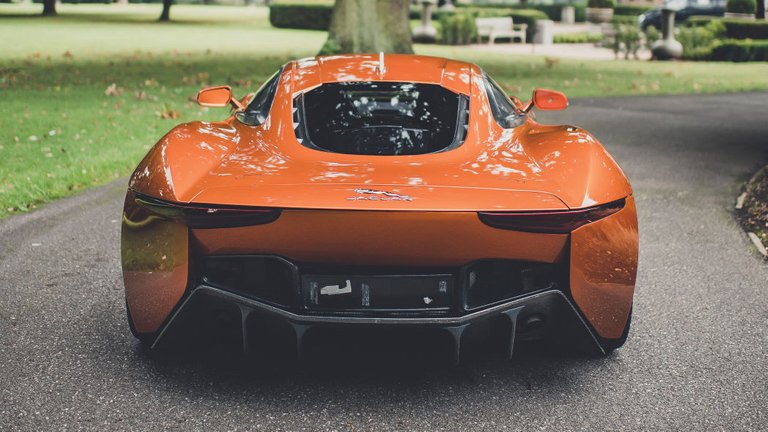
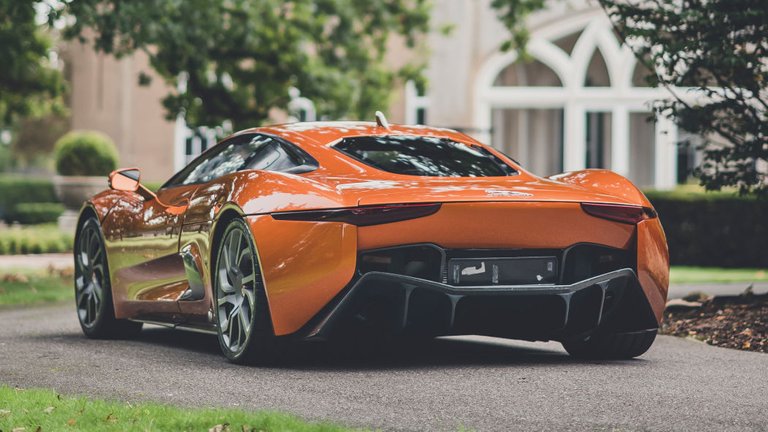
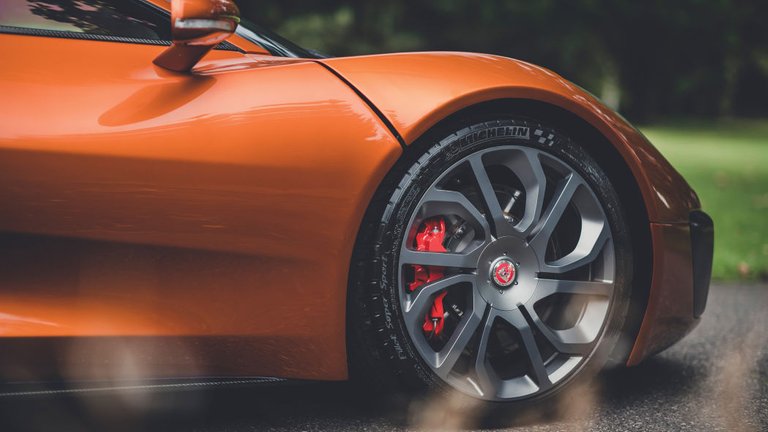
Credits to: RM Sotheby's - Jaguar C-X75 'Spectre' | It's gorgeous, from every angle.
However, as a consequence of some of the space-age tech used in the concept, also following along new developments in the years leading up to 2013; the production version had some crucial changes. For better or worse, it was just like the XJ220, all over again. The micro gas turbines were replaced with a more conventional, mid-mounted 1.6-litre twin-turbocharged inline-4 engine. 2 of the 4 motors were removed, making the C-X75 purely rear-wheel driven.
Yet, total output was increased significantly to a whopping 890hp, where 500hp comes from the engine, and 390hp from the electric motors. This would've made it far more competitive against the rest of the Holy Trinity. It sounds good too, as the Jaguar inline-4 now revs to an ear-shattering 10,000RPM, and onto a bespoke 7-speed automated-manual gearbox. The aluminium chassis was redone with the more exotic, rigid, and lightweight carbon-fibre, potentially shaving loads more weight.
However, although battery capacity was increased slightly, all-electric range was halved to just 31-miles, which still isn't too bad. You win some, you lose some. But by then, the global economic crisis was still taking its toll, and Jaguar couldn't feasibly manufacture, market, and sell a bunch of £1,000,000 supercars. So, they were unfortunately squeezed into cancelling all production. Consequently, this broke mine, and many others', hearts. Still, Jaguar was committed to using the learnings from the C-X75 project onto its future cars.
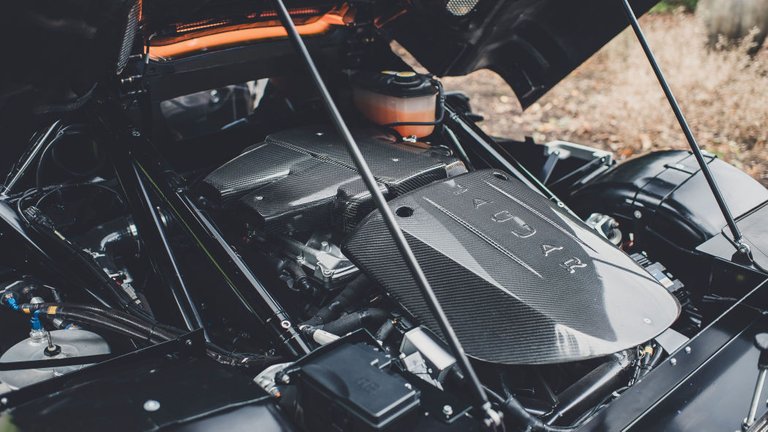

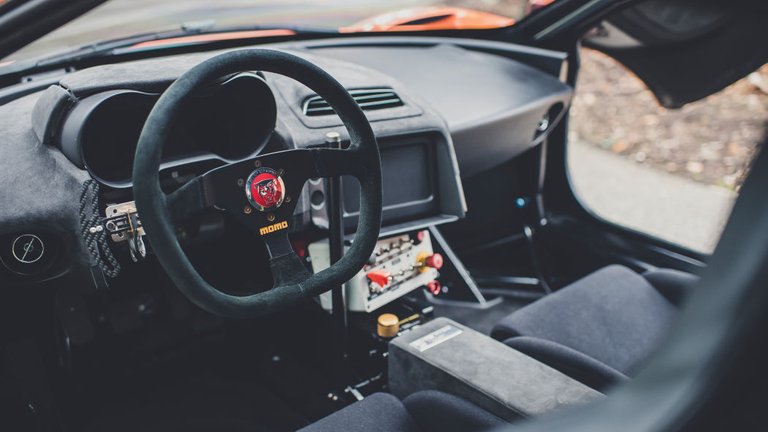
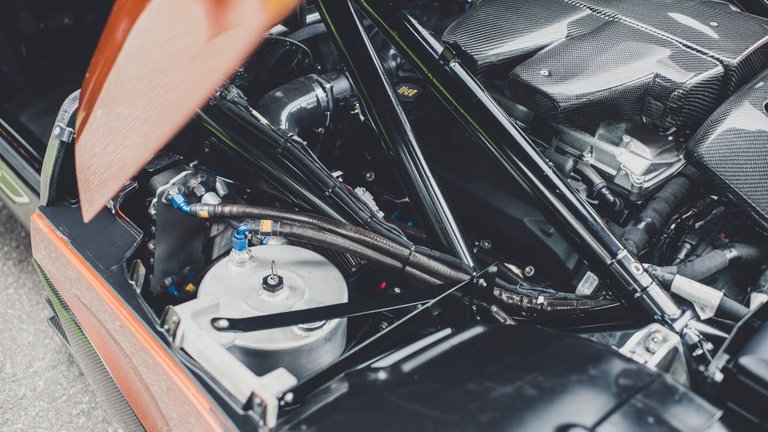
Credits to: RM Sotheby's - Jaguar C-X75 'Spectre' | Magnificent, as far as the eye can see.
One such benefactor is the still much-loved F-Type sportscar, which even follows its design cues, and taking some aerodynamic inspirations. One can't help but notice the influence its had on many of the other Jaguars roaming around. A total of just 5 C-X75 prototypes were made, where 3 were auctioned off, 1 went to a museum, and the final car kept by Jaguar for demonstrations. Jaguar later made 7 more specifically to be used in the 24th continuation of the James Bond franchise, Spectre.
This might be where most of us recognise the C-X75 from. In the movie, the orange C-X75 was driven by a loyal, and muscly henchman of Blofield, Mr. Hinx. As the baddie car, it chased 007 enthusiastically around the dark, narrow, and cobbled streets of Rome, where Bond drove an equally specially-made, Aston Martin DB10 concept. When we saw the movie for the first time, we held hopes that Jaguar might consider bringing the C-X75 back into production.
A New Hope?
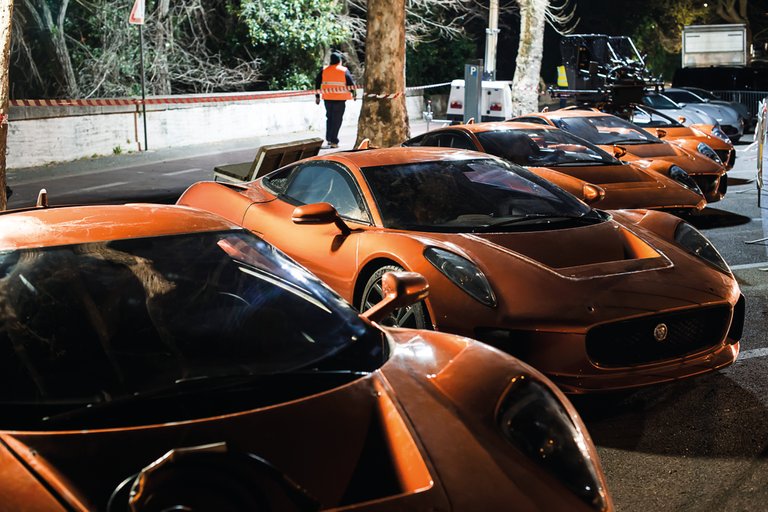
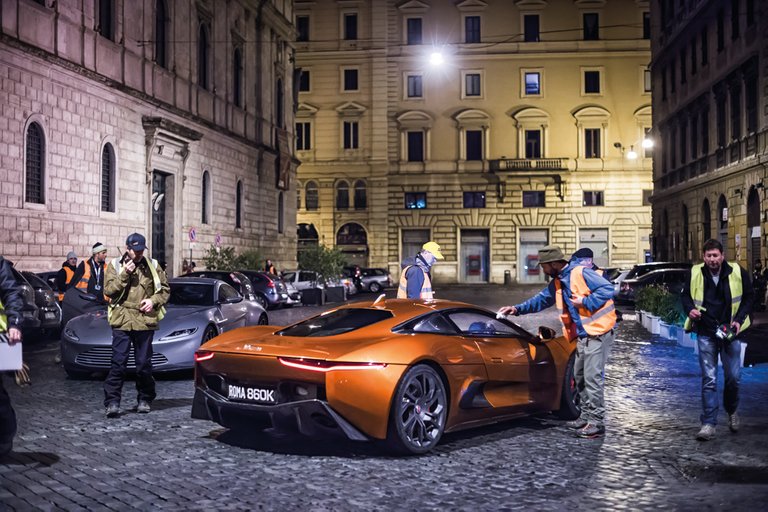
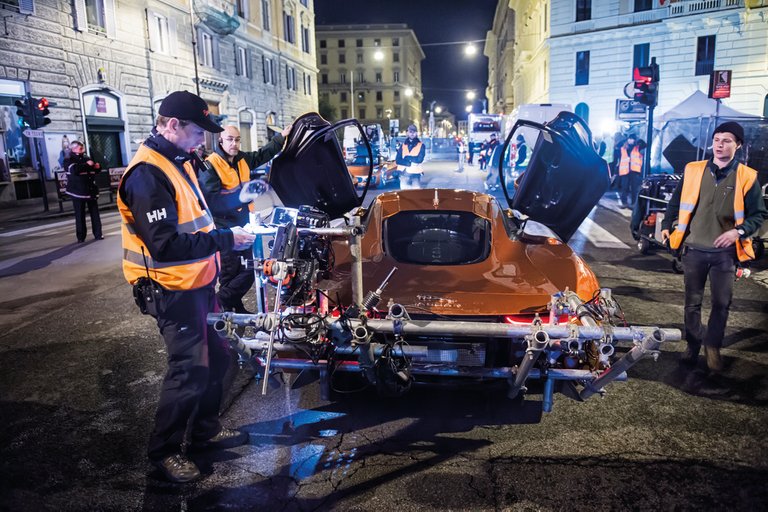
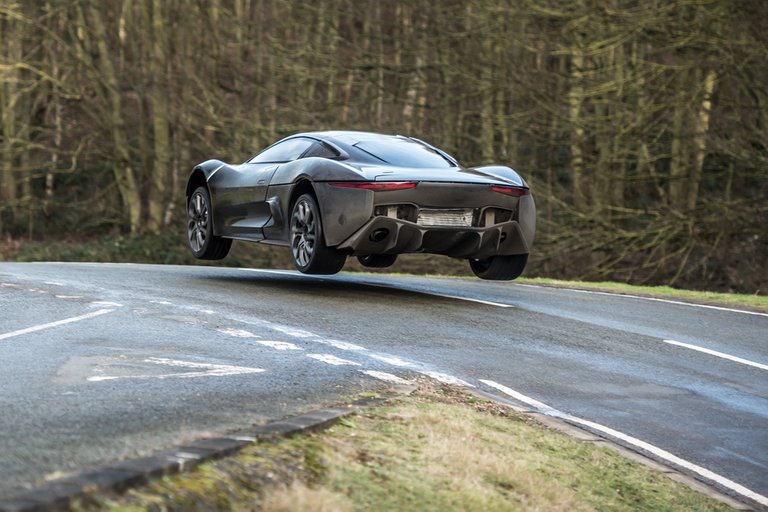
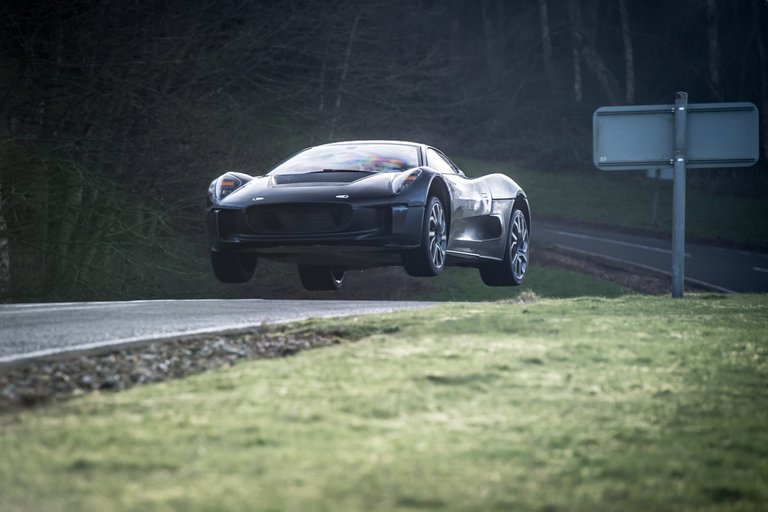
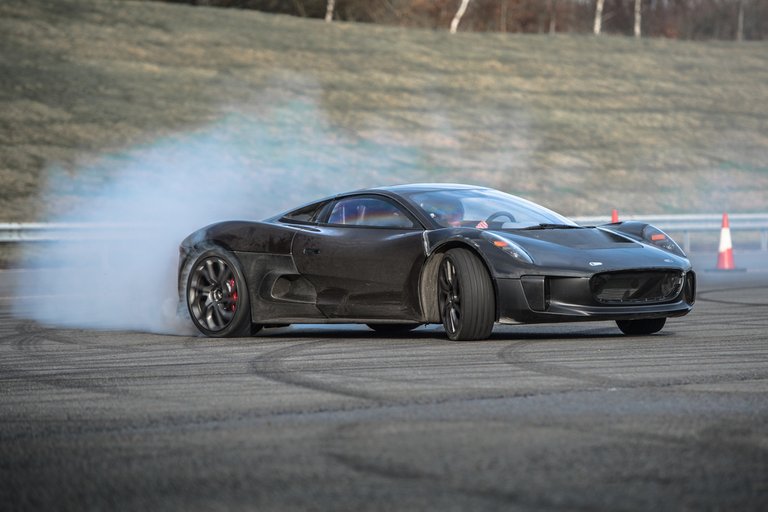
Credits to: Jaguar - C-X75, James Bond (Spectre) | Life as a stunt car.
But alas, our hopes are quashed, and unlike the DB10, which would later be the testbed for the Vantage, the C-X75 remains six feet under. Although the movie stunt cars were faithful to the originals, mechanically they are based around a World Rally Championship spaceframe chassis, and was powered by a more old-fashioned, 5.0-litre Jaguar supercharged V8. A few of these have made it onto the auction block, so you could potentially grab one of these rare gems for yourself.
The C-X75 was tragically ahead of its time, and far too revolutionary for its own good. The only downside that I can think of, is the fact that Jaguar never made it, and that there's not even a single cupholder in sight. Other than that, its perfect, and I dearly hope that Jaguar would go back to making mid-engine supercars once more. I think it would be a fitting tribute to a carmaker so intertwined with racy performance. Besides, if cash-strapped Maserati can do it, surely that British can-do spirit will prevail, someday. I will keep my fingers crossed.
Come on Jaguar build us another supercar 👍
They so really need to. For a company that's had such an illustrious racing heritage, they deserve to make a car that's reflective of it, and I can't imagine anything better than a mid-engine supercar. I really loved the C-X75 so much when I first saw it, and it broke my soul when Jaguar decided to axe it. Still, I have the hugely anticipated Maserati MC20 to look forward to 🙃
Nice
What an incredible machine! Almost like a flying saucer! 😁
It really is incredible, and with the amount of power it generated, it could very well fly like a UFO! It's truly a shame that Jaguar never built it, and there's only so very few of those prototypes driving around. I have the urgency to watch through Spectre again, just to see that Jaguar chase James Bond 😁
The Jaguar C-X75 'Spectre it is truly gorgeous from every angle but they seem to be all taking that same aero dynamic shape which seems to be today's norm 🤭
I can definitely see the resemblance between it and other supercars of today. Besides, a lot of the C-X75's design cues have inspired later Jaguars, like the all-electric i-Pace, and the recent F-Type redesign.
It's not at all a bad thing though, since its a pretty great design, and I can only hope for more in the future. It might be a bit of a far-fetched dream at this point, but I do wish that Jaguar would go back to making a mid-engine supercar. 🤞
Anyways who are we to complain i would take any of them and i will be screaming down highway 69 with ACDC blasting in the background 😅 😅
Lol, same here. I'd take this cruising down the curvy roads of the Alps, with Queen playing on the radio. That, or some Coldplay depending on the mood 😁
Same thoughts you got the idea...cool as 😅
Nevermind those two, I think I've found something so much better... Matt Monro, On Days Like These. This is the soundtrack on The Italian Job, and its so good to listen to as you're driving around a lovely country road, winding across the hills... 😎
Yep can certainly relate to that it puts me in the mood to go for a drive right now 🙂
very cool, are you saying its engine has no sound?
No, I'm afraid 😁. It has some sound, and it sounds pretty great for such a compact engine. What I meant was that this Jaguar never lived up to its dreams of becoming the groundbreaking supercar that the company, and a lot of enthusiasts wanted it to be. As such, it never had a chance to "roar", so to speak. You can hear how the C-X75 sounds, right here...
OK I UNDERSTAND YOU NOW. THE CAR IS A NICE ONE, I AM SURPRISED IT NEVER GOT THE FAME IT SHOULD HAVE GOTTEN
Aye, its a magnificent machine :-D
indeed it is, what is the name of the company that produced this machine?
Jaguar, in partnership with Williams Formula 1.
0k. i will love to check it out
Congratulations @zacknorman97! You have completed the following achievement on the Hive blockchain and have been rewarded with new badge(s) :
You can view your badges on your board And compare to others on the Ranking
If you no longer want to receive notifications, reply to this comment with the word
STOPDo not miss the last post from @hivebuzz:
👋 Hi @zacknorman97, I was flipping through the blockchain and stumbled on your work! You've been upvoted by Sketchbook / a community for design and creativity. Looking forward to crossing paths again soon.
✅ Join the Sketchbook Community
Thanks so much for the support, @sketchbook.bot! It's great to be meeting you, and hopefully we'll bump into each other again :-D
What a beautiful car, Jags have always dated really quickly yet look very good 10 year or so laters eg. xk8 etc - our favourite has to be the XJ220.
That's very true. I remembered the old saloon cars looking really old just a few years after they've gone out of production. But give them a bit more time, and they age as well as fine bottle of wine. Albeit, the C-X75 hasn't aged at all to me, and I think this is a design that'll stand the test of time, like that awesome XK8!
Here's my Twitter #POSH :-D